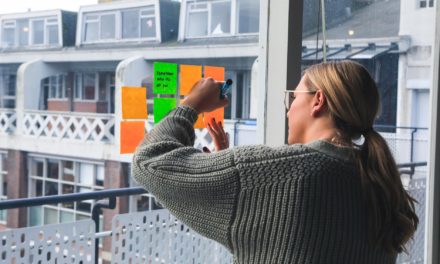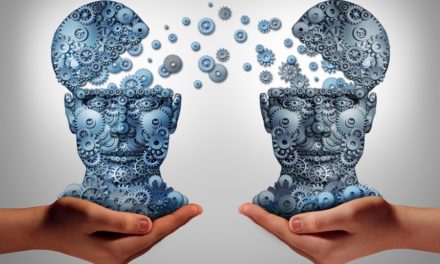Build A Design Culture To Create Superior Brand Experiences
Originally published on December 07, 2018The interaction and engagement that will enable your customers to experience your brand and its values, meaning and message, is often defined as the brand experience. Sometimes, the design of your experience is presented and thought of as basic outlines for user interaction, branded events or customer service. This is not wrong. It is just not the full picture of what designing a brand experience comprises.
There is a parallel here to an argument that has been stated again and again about the concept of the brand; a brand is everything that comes together to create people’s perception of entities like a company, product, service or person. In the same way, your brand experience is every experience related to your brand from customer awareness past the point of purchase. In a customer-centric business reality, designing your brand experience should be implemented on as many levels as possible throughout your organisation and throughout the lifecycle of your products or services.
In order to build a design culture, one needs to define what design means. In the evolution of design, the term was established as a design; a form, aesthetics. It is the process of creating something with a shape, form, function and with this understanding of design, it often is perceived as interfaces, packaging, product look and feel etc.
In the evolution of design, we have moved the concept of design from the output to the process that it takes to design; methods that are applicable to creating other solutions and outputs than that of objects of form, colour and function.
DIFFERENT LEVELS OF EVOLUTION
Organisations are on different levels of the evolution of the design mindset from output to process. According to one model of evolution, coined The Danish Design Ladder, an organisation moves through different steps in its understanding and implementation of design:
STEP 1: NON-DESIGN
An organisation that does not use design systematically.
STEP 2: DESIGN AS STYLING
Design is used for styling and finishing of company products. Current status for many brands.
STEP 3: DESIGN AS AN INNOVATION PROCESS
Design is an integral part of the company’s innovation process.
STEP 4: DESIGN AS A BUSINESS STRATEGY
Design is an integral part of the company’s business strategy.
The next iteration of the model, The Extended Danish Design Ladder further adds one step in particular of relevance to the designers of brand experiences:
STEP 5: DESIGN AS COMMUNITY AND ORGANISATIONAL TRANSFORMATION
Design of organisational structure and business model.
The experience of your brand that makes an imprint on the customer’s perception of it is merely the surface and the texture of the brand experience design. What lies beneath the surface is like the submerged part of an iceberg. A lot of elements and disciplines come together to create the magic and memorability of great brand experiences.
Exactly which departments and persons play a key role beneath the surface of your brand experience, is really up for you to define. Combining the skills and people necessary to lift up the brand experience above the surface is really one of your primary design tasks.
In order to successfully integrating design thinking, you will have to acknowledge that the level of maturity according to the steps in The Danish Design Ladder is different from one division or one person to the next, as is their perspective because of their role in the overall process. Do not try to forcefully fit everyone into a one-size-fits-all way of applying design, but recognise and utilise the diversity different perspectives and disciplines.
Let’s take a look at some of the building blocks for a great brand experience that may lay beneath the surface of the upside-upside-down mountain that is your brand experience iceberg. For each of the building blocks, you find is needed, you will need to assign them to a team. Sometimes, this will prompt you to design new teams made up of your existing resources.
CUSTOMER JOURNEY TOUCH POINTS
Creating a customer journey map and defining touch points has become one of the most popular ways of setting and visualising what you need to do at certain points of engagement with your customers. To create a journey map rich with depth and insight, you can benefit from bringing together people who are at the front positions at different stations of the journey.
NEW PRODUCT OR SERVICE STRATEGY
New product or service strategy should be done from the very beginning as a balance act between business needs and customer needs. Applying design methods will help you define what well-defined customer personas may not know that they need in certain contexts, and will help you innovate beyond the point of taking direction from traditional marketing research.
NEW PRODUCT OR SERVICE EXPERIENCE
The unboxing a product or the opening the door to your hotel room are key experiences that can be designed to create a memorable moment. A moment, that can turn customers into loyalists and advocated of your brand.
TEAM DESIGN
Part of driving innovation within an organisation is also putting together the team that is needed to create a success. Sometimes this means assigning new roles and responsibilities. There are many methods for putting together the right team. When applying a design method, the project leader should take look at the different attributes, including personalities, types or skillsets, and design a team that complements the intentions of the brand experience design.
Design as a way of thinking holds merit as a way of moving your organisation forward towards creating a deeply rooted brand experience. It enables you to design and implement engagement and interaction between you and your customers, that is implemented, and thus, experienced throughout many points of contact with your brand.
Your first step is to create a design framework that empowers different levels of design throughout your organisation, paving the way for the integration of the principles of design as a mindset, customised to your brand and your needs.




